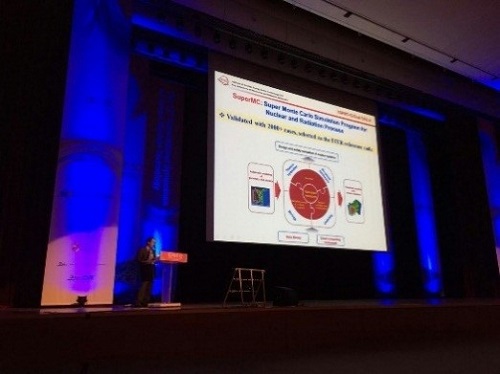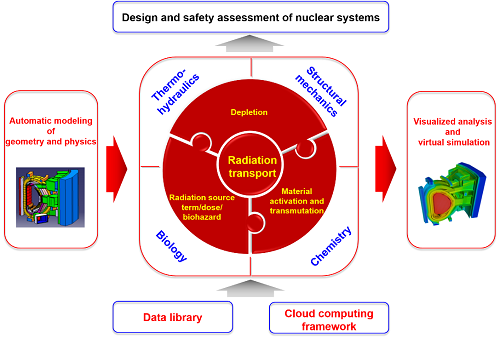At the 12th International Symposium on Fusion Nuclear Technology in Jeju Island, Korea, from September 14 to 18, 2015, the Super Monte Carlo Simulation Program for Nuclear and Radiation Process SuperMC 2.3, which is independently developed by the Institute of Nuclear Energy Safety Technology, Chinese Academy of Sciences • FDS Team, was officially international released. Its latest R&D progress was invited to be reported at the conference and evoked highly positive repercussions.
Following the successful solution to the world class difficult problem of automatic modeling of nuclear reactors in engineering, the latetest version of SuperMC2.3 has overcome another difficulty of accurate nuclear simulation. The proposed seamless multi-linked, complex engineering model coupled neutronics simulation method, solved the extremely nonuniform isotope distribution with the "intersection of four level complemental cell description" method, accurately simulated the seamless coupled model of the “3D digital factory PDMS” and the shielding plant of “Hualong One”, the self-developed third generation reactor of China. It also supported the construction of the latest fine nuclear analysis benchmark model, ITER C-Lite, of the world’s largest science and technology cooperation program “the International Thermonuclear Experimental Reactor ITER” and has finished the precise simulation of the model.
The lack of independent intellectual property rights of nuclear software is one of the bottleneck problems that restricted the “go global” process of nuclear industry of China. Due to being able to accurately simulate complex models, the Monte Carlo simulation code is regarded as one of the infrastructure software for the validation and verification of nuclear facility designs. The international authority Monte Carlo code has long been put under an embargo to China. After more than ten years of research, FDS Team, has developed the SuperMC code with completely independent intellectual property rights. The SuperMC is a general purpose, intelligent and multi-functional program for the design and safety analysis of nuclear systems and has been broadly applied in well-known nuclear facilities across 44 countries (including the four national laboratories of America) and more than 20 major international nuclear projects, and was selected as a reference code by ITER. This international release marks the self-developed Monte Carlo code of China has entered a new and important phase, greatly enhances the international influence of Chinese nuclear software and makes an important contribution to the independence progress of China nuclear industry and the “go global” national strategy.

Fig 1 Software PIC giving an invited report

Fig 2 Functional architecture of SuperMC